Items
keywords is exactly
relief
-

Amelia
Amelia explaining her flight plan -
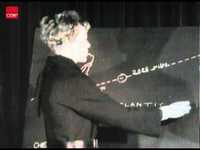
Amelia
Amelia Earhart explaining her flight and the welcome she received -
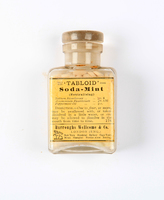
Soda-Mint (Neutralising)
"Antacid, exhilarant and stimulant. From one to three as a neutralising agent, in irritable and acid conditions of the stomach, dyspepsia, flatulence, etc. They may be swallowed with water, or be powdered and dissolved in water and taken as a draught" (BWC 1925:138). -
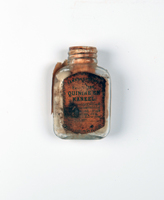
Quinine and Cinnamon/Quinine en Kaneel
Bottle of a local remedy bought by Walter Floyd to include with the contents of the chest. The torn label makes it hard to read where it was purchased, but its bi-lingual text suggests that it was used by the Afrikaans speaking population at the time, most probably as part of their ‘Huis Apotheek’. The legible part of the lable states that it is "an instantaneous cold cure" and "invaluable for influenza". -
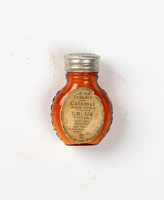
Calomel
"Alternative purgative. Use with caution. One to five of the smaller dose may be taken withh a draught of water as a cathartic and liver stimulant, or one, twice daily, as an alternative. The 5-grain dose is given in cases of jaundice accompanied by fever" (BWC 1925:122). -

Iodoform
"Since the beginning of the 20th century, iodoform has been commonly used as a healing and antiseptic dressing or powder for wounds and sores, however such clinical use to this date is limited. Iodoform is soluble in fatty acids and decomposes releasing iodine in nascent state (96,7% of iodine) when in contact with secretions or endodontic infections" (Estrela 2006: 33 - 37). -

Zinc Sulphate
"Astringent. One or two dissolved in an ounce of water, will be found useful as an eye-lotion, and as an injection or astringent lotion" (BWC 1925:144). -

Phenacetin
"One to two, powdered, and taken, if possible, in a hot liquid, will be found useful in headache, neuralgia, etc. The dose may be repeated after an interval of three hours" (BWC 1925:134). -

Opium
"Anodyne, astringent, narcotic. Use with caution. In cholera and dysentery, one to two may be taken with a little water, by an adult, according to the symptoms of the case. For the relief of pain, one my be taken every three or four hours until desired effect is obtained" (BWC 1925:133). -

Tannin
"Styptic. To stop bleeding, one or more may be pulverised, and the powder applied direct to the wound. Internally, for haemorrhage, and for dysentery, etc. One or two may be powdered and taken in a glass of water; or they may be slowly sucked of the effect be desired in the mouth or throat" (BWC 1925:140). -
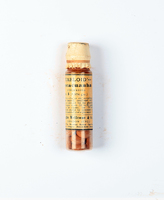
Ipecacuanha
"One thrice daily as an expectorant and diaphoretic, or for gastric irritation. In dysentery, four or more may be given with one 'Tabloid' Opium, gr.1; and four to six as an emetic in poisoning, etc. These 'Tabloid' products should be powdered and taken with a little water" (BWC 1925:129). -

Dover Powder
"Ipecacuanha with Opium. Anodyne, diaphoretic. Use with caution. One to three may be taken with a little water, on retiring, to break up a cold, or as an astringent, or for relief of pain" (BWC 1925:125) -
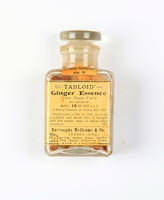
Ginger Essence
"Aromatic stimulant. One to two may be powdered and dissolved in a cup of hot water (with a little spirit if desired), and taken as a draught in colic, flatulence, etc., or as a stimulant" (BWC 1925:127). -
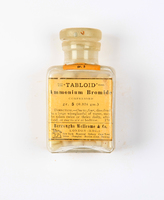
Ammonium Bromide
"Nerve sedative. One or two, dissolved in a wineglassful of water, three times a day, in hysteria, headache or neuralgia. As a sedative, four at bedtime " (BWC 1925:116). -

Hazeline (Witch Hazel)
"'Hazeline' brand witch hazel is prepared from the fresh young twigs of Hamamelis virginiana. It may be taken in doses of one to three teaspoonfuls, in water, for internal bleeding, or as an astringent in diarrhoea. Externally, it is of the highest value as an application, either plain or diluted with water, for piles and congested conditions of mucous membrane generally. It is the best application for cuts, abrasions, bruises and inflamed surfaces" (BWC 1925:128). -

Corrosive Sublimate
"Powerful antiseptic. Highly poisonous. Use with caution. Gr. 1.75 in four ounces, or gr. 8.75 in a pint of water, makes a solution of 1 in 1000, a useful strength for washing wounds, etc (BWC 1925:125). -
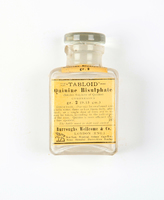
Quinine Bisulphate
"Anti-malarial, tonic. In malarial fevers, one or two should be taken every two hours. In ague, one to four should be taken, followed by a glass of water, and repeated in three hours if necessary" (BWC 1925:137). -

Compound of Tincture of Chloroform and Morphine
"Directions: For an adult, from five to ten minims may be taken in a wineglasful of water, and repeated in three to four hours, if necessary. In severe cases, the dose may be increased to fifteen minims. As this preparation contains potent posions, it should be used with caution". (As read on the lable of the bottle) "Action and Uses: In addition to its well-known use as an anaesthetic, Chloroform has been highly recommended for the relief of asthma, and in the form of vaporoles can be employed safely during the passage of calculi from the gall-bladder or kidney. The vaporoles are the most useful in obstetric practice. A vaporole may be crushed and the vapour inhaled from the palm of the hand" (BWC 1896: 38). "Morphine Sulphate: Anodyne. Use with caution. One swallowed gives great relief of pain"(BWC 1925:132).


